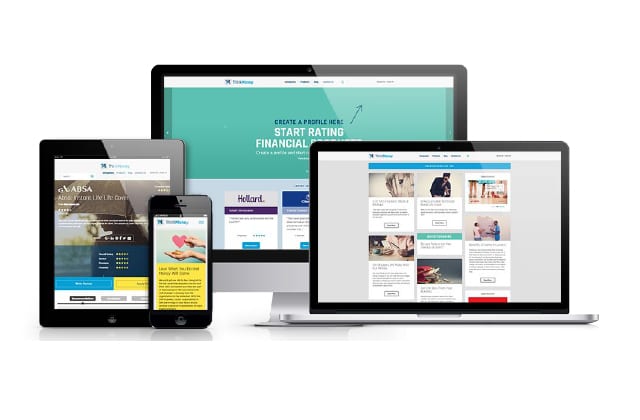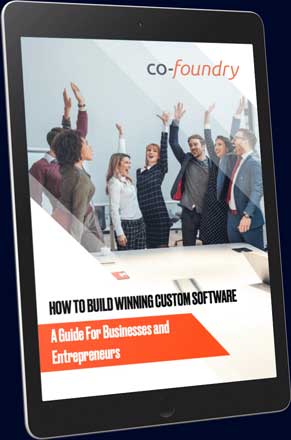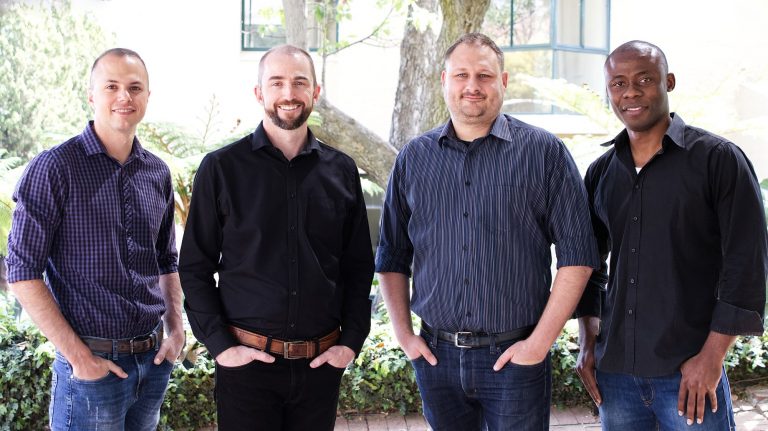How To Release Software with High Returns (The Agile Approach)

It goes without saying that you’ll want to profit from the software that your business releases. But it is also easy to invest heavily in a product that fails once it reaches the market. This can be devastating to many businesses and is something to be avoided at all costs.
At Co-Foundry we use and encourage others to use the agile development approach. In this method, a software product is built in phases. Testing is done during each phase and improvements and additions are made for each new release.
This helps to lower the risk of losing money and improves the chances of releasing a software product with high returns.
What is agile development?
In the past, developers would build an entire software product before releasing it to users. The developer made all the decisions about how the product should look and function. But this approach leaves a lot of room for failure. There’s no guarantee that once your product hits the market, users will like it, or even need it.
The agile approach removes a great deal of this risk. It allows for products to be built in bite-sized stages. During each stage, the product is tested by your target market. Feedback is collected from users and used to improve on the next version, or iteration, of the product. In this way, you’ll gradually keep adding features to your product until it’s close to the version you imagined in your original idea.
The most important part of the agile approach is that it keeps the end-user in mind throughout. By keeping the user’s needs in consideration, you have a higher chance of developing a successful product and achieving your business goals.
Agile development is also a collaborative approach. Different teams within a business, such as a project manager, designers, developers, and the marketing department, work closely together in a more cohesive process, rather than a disjointed one in which feedback on important results is delayed. This improves the overall outcome of the project.

Scoping a project: Why it’s important to have a plan
Before developing your product it’s vital to have a plan. Scoping a custom software or app development project gives you a detailed plan that covers vital every aspects of your idea. It provides the first step in your development roadmap that will save you time and money in the long run.
Scoping is equivalent to having an architect’s plan before building a house. Without this plan, you might not know where to start building, what materials are needed, how much of each material is needed, and how long the building will take. You may land up buying materials or taking unnecessary steps. This wastes time and money.
Similarly, your software development plan will outline the project objectives and what it will take to achieve them. It highlights milestones and estimates the timeline and costs. It also foresees potential challenges and how to overcome those.
Included in the plan will be the critical success factors for that project. What are the things that are critical to the project’s success? In software, this might include security, reliability, or good user experience.
Market validation: Will your software solve an unsolved problem?
The most important goal that needs to be met to make high returns is that users must buy and use your software product. To achieve this, your software needs to solve a problem that they have.
When you come up with an idea, before even beginning with development, do market research. See whether there is a market that has the problem your idea solves. This is called market validation, or ‘product-market fit’.
Part of this stage involves taking your riskiest assumptions – those that would carry the most risk for your business or product if they fail – and test whether they’re valid or not.
There are many quick, relatively cost-effective ways to do this including surveys, setting up a crowdfunding platform, or running A/B tests on different versions of an advertising campaign.
One of the benefits of this stage is that it gives you a better idea of who your target market is. You keep this information in mind when building the product of course.
Use the research stage to also determine whether or not there are other competitors in the market with similar products. See how many companies are offering a similar product or service. If there are competitors, you will have to determine whether there is space for your software in that market and how you will make it stand out from the others.
Once you’ve done this, you can move on to developing your software.
Release a minimum viable product for feedback and fast returns
A minimum viable product (MVP) is the first product that you actually build. It includes the main, most basic features that are needed to create value for your customers. Importantly, your MVP must be of high quality because you will be building it out in future versions. Use your MVP to drive traffic and user engagement.
When you release your MVP to customers, it’s crucial to collect their feedback. Conduct interviews with users to find out which features were and weren’t useful to them. Did the software solve the problem they set out to solve? Find out if they had any usability issues or encountered technical glitches. Ask whether they thought the product was good value for money. If they decided not to buy the product, ask why not. Find out what else you could do to improve their experience.
Monitor analytics once your MVP has been released to see how it’s operating. Also, use this opportunity to determine whether it’s competitive. Don’t forget that once you’ve launched your MVP, you’ll need to have a well-functioning customer service facility to attend to customer questions and complaints.
Launching an MVP is a great way to get your product out to market quickly and start making some money off of it. Use the insights you gain from the MVP to improve and scale up the product. It is easier and cheaper to make changes to a basic product than it is on a more complicated, final product. It also means you haven’t invested heavily in something that users don’t want and don’t care about.
Each new version that you release should make more money than the previous iteration. This is how you’ll ensure that you eventually have high returns on your product.
Why is user experience so important?
User experience (UX) has become an important part of software development and is an integral part of the agile approach. UX ensures that software is easy to use and makes users feel good. A product with good UX is intuitive, provides value to the users’ lives in some way, and creates a feeling of trust.
To ensure good UX, make sure that your product is technically sound. If users encounter technical glitches, they will be less likely to continue supporting your product. This is especially true if it’s a product that requires them to share their personal or banking details (such as an e-commerce store).
An essential part of UX is the user interface (UI). This refers to the point at which the user interacts with your software (on the screen of a phone, tablet, or computer). Good UI incorporates design to make sure the user’s journey is straightforward and intuitive. Users mustn’t struggle to figure out where to click to make a purchase or how to visit a product page.

A low-risk approach for a high return on investment
There’s always going to be a certain cost involved in creating a high-quality and useful software product. However, the benefit of the agile approach is that it requires smaller financial investments stretched out over a longer period.
This decreases the risk of making a once-off, potentially massive investment right at the beginning of a project, which is not necessarily going to succeed. By releasing an MVP and numerous iterations of your product, you can start recouping some of your costs early on in the project, rather than waiting until the full version has been completed and released.
That is why it is so important to tackle the project in bite-sized chunks. During the development of each phase, make sure your users’ needs are still being met and that you are still moving in the right direction to achieve your business goals.
This strategy will deliver a far more accurate and successful product because you’re validating each step instead of taking many steps before validating them.
Co-Foundry’s approach to software development
At Co-Foundry, we use the agile software development approach to ensure that our clients get the highest possible returns on their investment. Our high-quality solutions are cost-effective and provide value for money at each step of the journey.
We believe in providing unique and innovative solutions that are tailored specifically to your needs, rather than out-of-the-box solutions. We aim to get a workable application out quickly to test in real-world situations to determine what does and doesn’t work.
For example, we worked with Elint safety, healthy, environment, and quality standards consultants to develop custom software for their highly specialized field. We developed a robust system for them that easily manages the compliance demands of their clients.
This system has helped Elint to achieve their initial goals of more efficient and cost-effective compliance management. With each improved version that we built for Elint, we released more features, which decreased the amount of manpower Elint needed and as a result dramatically improved their profits.
We’d love to chat with you about how we can be a part of your project. Contact us today to see how we can enable your business vision using tailor-made software.


Want Help With Your Software Project?
Get Our Free Ebook: How to Build Winning Custom Software – A Guide For Businesses and Entrepreneurs
By subscribing, you agree to get emails from Co-Foundry. We’ll respect your privacy and you can unsubscribe at any time.






